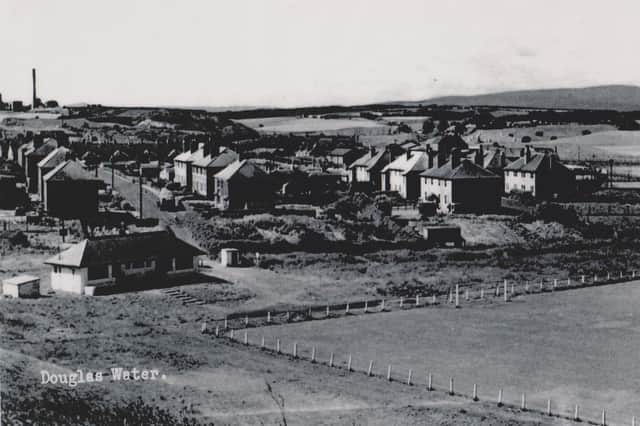Communal spirit of Clydesdale mining community


Going back to the 17th century, neither Douglas Water nor Rigside feature on any map as there were no mines – just marginal farmland.
At that time the activity was agriculture based around a small farm town called Ponfeigh.
Advertisement
Hide AdAdvertisement
Hide AdIt was the discovery of coal in the area that changed everything towards the end of the 17th century.
At this time mines took the form of a bell pit about 40 feet deep with short tunnels radiating out. Access was gained by a wooden ladder, up which women carried large bags of coal, about 12 to 14 stone in weight. At the bottom the men and boys worked the seams of coal.
It is not surprising that the majority of people were distinctly unenthusiastic about working in these mines to the extent that people were sentenced to work in them and treated like slaves.
The coal they extracted was taken to Lanark at Tullieford which is still a right of way. Fortunately this practice ceased towards the end of the 18th century.
Advertisement
Hide AdAdvertisement
Hide AdRigside and Douglas Water started to take shape at the end of the 18th century when new mines were sunk and a railway constructed along with Ponfeigh station.
Of these mines the most important was Douglas Colliery, created by the Coltness Iron Company in 1893; it was at this time that Douglas Water was built to house the growing number of miners.
The Douglas Colliery was to survive nationalisation in 1948 as it was one of the most productive mines in South Lanarkshire, producing 266,000 tons per annum and employing 886 men. Unfortunately, a fire in 1967 resulted in its closure.
The local Communist party was determined that the children had better opportunities; as a result, Douglas Water was one of the last areas in the 1930s to return a Communist councillor.
Advertisement
Hide AdAdvertisement
Hide AdThe NUM also set up a Miners’ Institute in Douglas Water which had a library, catering facilities and a stage.
This helped make Douglas Water a great place to live, despite the arduous work at the colliery.